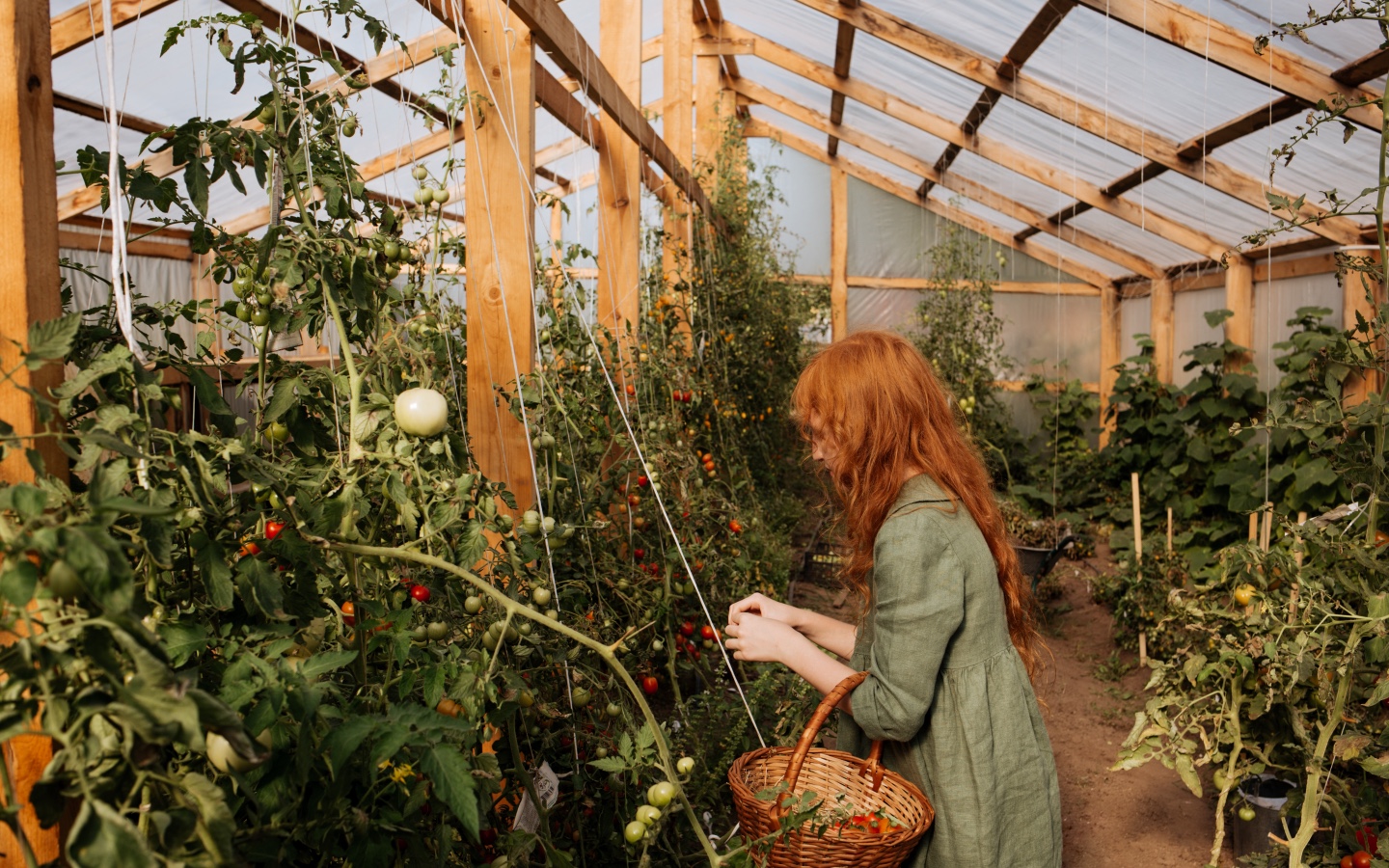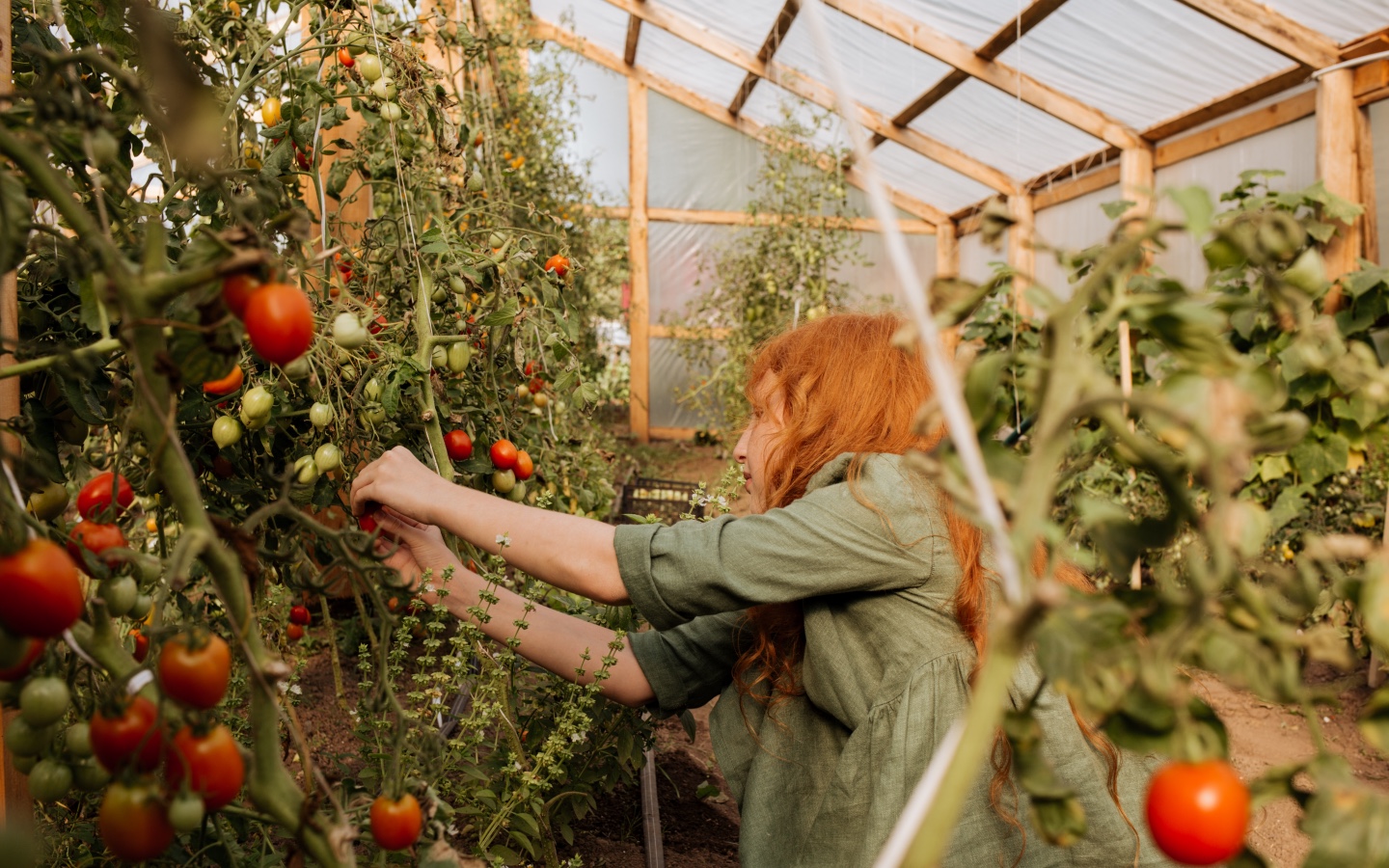Herbicide-resistant superweeds are wreaking havoc on the agriculture industry. The solution lies in back-to-basics farming methods like regenerative agriculture.
Herbicide-resistant weeds are pesky crop killers. They were first reported in 1957 when the Spreading Dayflower in Hawaiian sugarcane fields was found to be resistant to a synthetic herbicide. But back then, the issue farmers had to navigate was herbicides that killed both weeds and crops. Then came Monsanto.
In 1974, the agricultural biotech company launched Roundup, a new herbicide whose active ingredient is glyphosate. To ensure Roundup became the dominant product in the industry, in 1996, Monsanto began selling genetically modified soybean, corn, canola, and cotton seeds that are resistant to both pests and Roundup. (A study by Environmental Services Europe determined Americans used 1.8 million tons of glyphosate from 1974 to 2016. Globally, that number was 9.4 million tons, enough to fill more than 2,300 Olympic swimming pools.)
Both innovations were hailed as wins for farmers and the environment. GMO crops require fewer herbicides to thrive, which reduced the environmental impact of these chemicals by 18.4 percent in 2016. GMO seeds also make no-till practices more viable, in turn, reducing greenhouse gas emissions by an amount equivalent to taking 16.7 million cars off the road and improving soil health during the same period.
We know now the negative environmental and human health consequences of glyphosate herbicides like Roundup far outweigh the positive. Glyphosate has been associated with the destruction of beneficial microorganisms in the soil, contamination of groundwater and waterways, and depletion of biodiversity, along with development and reproductive toxicity, birth defects, cancer, and neurotoxicity in humans.
In addition, pervasive and continuous use of Roundup by farmers for more than 20 years resulted in ubiquitous glyphosate resistance in weeds. Again, Monsanto had a solution. The company launched re-engineered versions of GMO soybean and cotton seeds that are resistant to both glyphosate and dicamba, another common herbicide. But just five years later, in 2020, users reported the first dicamba-resistant weed.
Now, farmers are dealing with a sinister situation: superweeds are developing a resistance to new herbicides faster than Monsanto and other agrochemical companies can evolve them. Superweeds are prevalent in more than 60 million acres of U.S. farmlands, and there are 124 unique resistant weed species in the country.

Read more: Why Local Farmers Need Your Support Now More Than Ever
“When herbicide-resistant crops like glyphosate-resistant corn and soybean were released into the market, it literally revolutionized the way weeds are controlled by growers,” says Dr. Mithila Jugulam, Professor of Weed Physiology for the Department of Agronomy at Kansas State University. “For growers, it was like a silver bullet. They could go through their field, and if they see two or three weeds, they just apply herbicide. Their fields were absolutely clean because they could use herbicides anytime. But we are now paying the price.”
The face of this category of hardy, difficult-to-kill weeds is Palmer amaranth — or pigweed — a species that thus far has shown resistance to eight (and counting) herbicides. Palmer amaranth reproduces at a rapid pace and regrows easily — even after being uprooted. While this is true, it’s important to note the cultural significance of the plant for Indigenous communities who have long relied on the plant as a nutritious source of manganese, magnesium, iron, phosphorus, and antioxidants as well as for ceremonial purposes.
For modern farmers, their worry is, if left unchecked, the resilient superweed could contribute to yield losses of up to 91 percent in corn, 79 percent in soybean, and 59 percent in cotton, according to a 2021 study.
“Palmer amaranth was localized in the southern part of the U.S. for the most part. That’s where it originated. But it has an amazing ability to acclimate under different environmental conditions. So, it has migrated — it has gone up to the northern parts of the U.S. as well as some parts of Canada,” says Dr. Jugulam. “That’s why multiple resistance is such a big issue. If you leave them uncontrolled, in subsequent generations, you see many plants with those genetically transferred traits, and then you are looking at an invasion of multiple resistant weeds in the cropping system.”
When the majority of corn, cotton, and soybean farmers began using Roundup-ready seeds and the glyphosate herbicide that works in conjunction with them, they abandoned diverse, integrated weed management. The rise of industrial farming also made regenerative agriculture, which helps control weed dominance, a dying practice. Monoculture is the new way of business. Today, farmers are stuck on what is known as the ‘pesticide treadmill’ and it can be difficult — and expensive — to reverse course.

Read more: The Team Helping Female Farmers Rebuild in Central America
The pesticide treadmill refers to the status quo in the farming industry: a large agrochemical company develops seeds made to be used with specific pesticides, sales of seeds leads to increased use of the pesticide, widespread pesticide use leads to herbicide-resistant superweeds, the agrochemical company markets a stronger pesticide to combat the superweeds, and so on.
As the treadmill continues, farmers are forced to spend more money on additional — and more toxic — pesticides, which further impact their livelihood, their health, and the environment. According to an Environmental Science & Technology report, 61 percent of U.S. waterways contain pesticide levels considered harmful to aquatic life. Meanwhile, a study from Soil Association shows a direct correlation between pesticide use and decreased microbial biodiversity in the soil. When it comes to farmers, overexposure to toxic pesticides can cause skin irritation, allergies, headaches, dizziness, nausea, and, in some cases, chronic illness or death.
As temperatures continue to rise as a result of climate change, farmers stuck on the treadmill will need even larger amounts of pesticides to control weed growth. “The herbicides we tested are more efficacious when the plants are grown in cool temperatures compared to high temperatures,” says Dr. Jugulam. “This suggests future climatic conditions, at least when it comes to temperature, are going to make these weeds more aggressive, and this is true for herbicide-resistant weeds as well as the susceptible ones. It’s a very scary situation.”
So why don’t farmers just give up extensive pesticide use and switch to climate-friendly agricultural practices that would help mitigate weed dominance? Lobbying by the Farm Bureau against sustainable farming. The Farm Bureau props up taxpayer-funded farm insurance subsidies that favor large industrial farms over small, independent operations and discourages crop diversification and regenerative practices that would improve soil health, crop yields, and weed persistence. The reason for this favoritism goes back to the passage of the North American Free Trade Agreement (NAFTA) in 1994. Since then, the government has encouraged the planting of popular crops, like soybeans, that can be exported for profit, which has led to the prevalence of large industrial farms.

Read more: Why Regenerative Agriculture Produces Healthier Soil and Farms
However, time and again, regenerative agriculture practices such as minimum soil disturbance, the planting of cover crops, and crop rotation have been shown to drastically reduce pesticide reliance, support crop resilience, and improve root growth and soil health. The upcoming 2023 Farm Bill, which is passed by Congress every five years, is expected to include incentives that would make it easier for farmers to implement climate-friendly agricultural practices like planting cover crops.
Ten years ago, Adam Chappell, a farmer in eastern Arkansas, was spending $150 an acre on pesticides across his 8,000-acre farm to keep invading Palmer amaranth at bay. Fed up, he made the switch to regenerative farming. Since then, Chappell has noticed improved root growth in his much healthier soil, a 50 percent reduction in irrigation frequency thanks to his use of cover crops, and an increase in water drainage in the soil, which will be helpful as intense rainfall events continue due to climate change. Chappell has also greatly diminished his dependence on pesticides. He pays about $3 per acre compared to the state average of $36 per acre.
“Multiple tactics should be used by growers. We should not depend on one method of weed control that is chemical-based — these are the lessons learned,” says Dr. Jugulam. “What we are suggesting nowadays is integrated weed management, where you use other techniques for weed management like shallow tillage and cover crops. We have to come up with a more viable option so we can reduce more resistance cases in weeds.”
Read more: Climate Change is Coming For Your Coffee
Have feedback on our story? Email us at [email protected] to let us know what you think!

Shop Pillows
The Essential Organic Pillow Collection
Gentle, breathable, non-toxic support.





